

Home
About Us
Allotments
Garden Equipment
Seed Suppliers
Manure Problems
Children's Pages
GLA Blog
Weather Blog
School Veg Patch
Useful Links
Growing an annual flower bed
Every year we have one or two areas of the allotment which we devote to annual flowers. Not only do these beds look beautiful and provide us with cut flowers but they also create a nectar bar for beneficial insects.

Usually I cut or dead head he flowers accompanied by a symphony of buzzing which sometimes follows me as I carry the flowers back to buckets of water. Most of the varieties chosen for sowing are hardy annuals such as cornflowers, nigella, godetia, calendula and papaver but I also sow some half hardy varieties such as cosmos and zinnias.
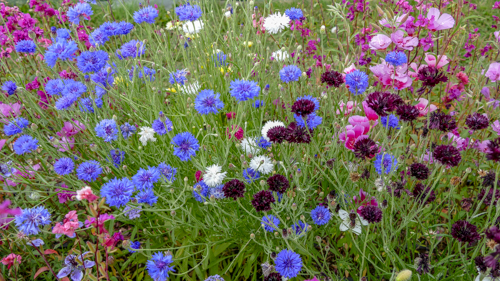
I chose mainly hardy annuals as I prefer to sow the seeds directly in the ground as I find transplanted plantlets seem to suffer a check to their growth and take a while to recover the impetus to grow. Often this sown later in the ground overtake earlier sown transplants and consequently produce stronger plants.
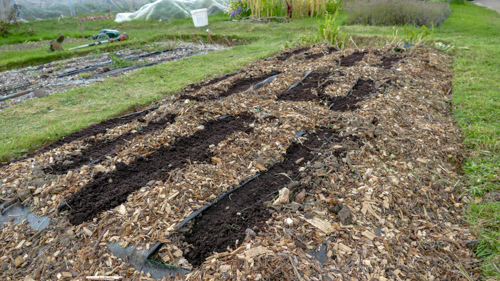
We use lots of weed control fabric on our plot, without it we would struggle to keep weeds under control. Our soil is also heavy clay and so we rarely sow seeds, especially small ones, directly into the soil. We prepare a shallow trench which is then filled with multipurpose compost.
Sticks are spread across the bed to deter birds from dust bathing or other animals from walking on the newly sown seeds.
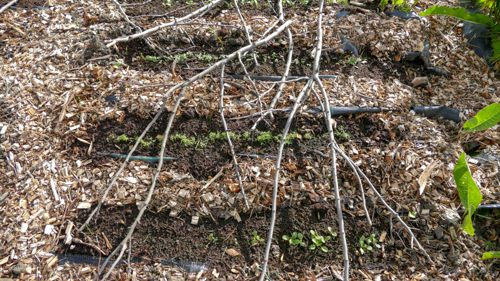
The seeds are sown into the compost mixing patches of the various varieties of flowers to create an intermingled final impression.
Compost dries out quickly and so the seed drills need to be watered regularly.
Most annual seeds germinate fairly quickly but can all victim to slugs and snails on the lookout for a tasty place to dine. I often have to resow patches were seedlings have been munched. Some types of flowers are more attractive to slugs than other, for instance they seem to prefer calendulas to cornflowers.
I try to sow a succession of seeds through summer to prolong the flowering season. The half hardy annuals are included in later sown beds, once the danger of frost has passed.
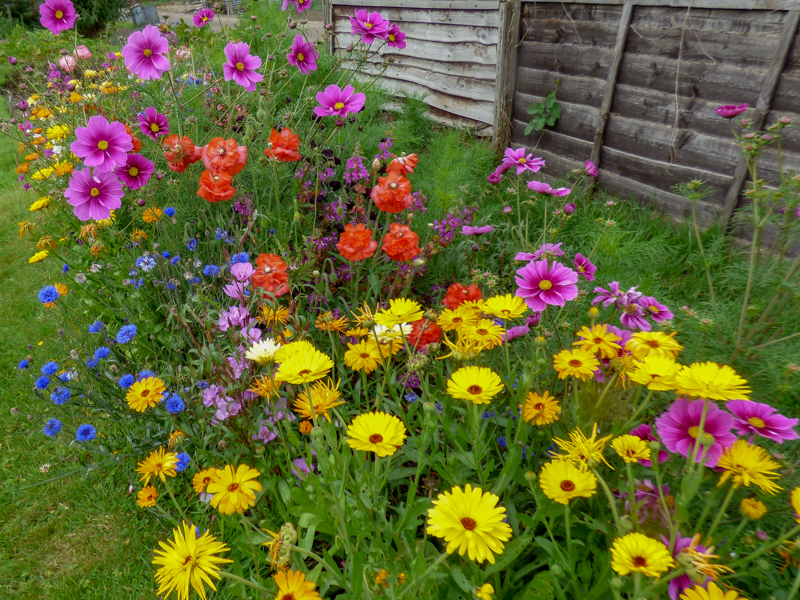
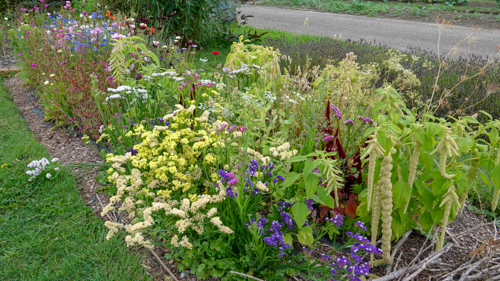
In 2018 I decided to add some everlasting types of flowers to the mix. This was primarily intended to provide drying materials for a pot pourri nit the flowers produced a lovely display and so I think I will grow them again and maybe add more varieties.
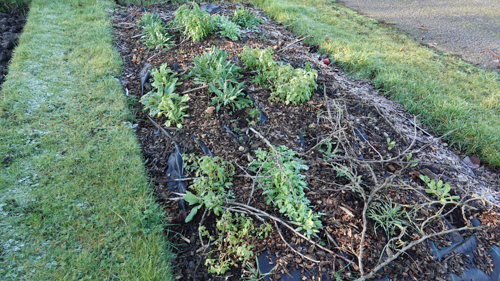
I also try to sow some of the hardier varieties later in the year, around the beginning of September, to overwinter, If these survive whatever winter throws at them, they produce some earlier flowers the following year.
Our Plot at Green Lane Allotments Blog | A Gardener's Weather Diary | School Vegetable Patch Website
© Our Plot on Green Lane Allotments - Please email me if you wish to use any of this site's content